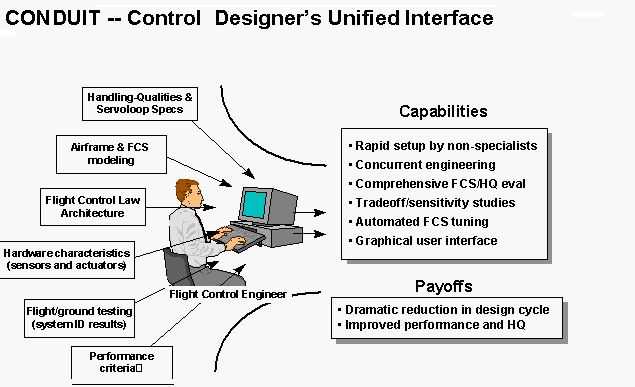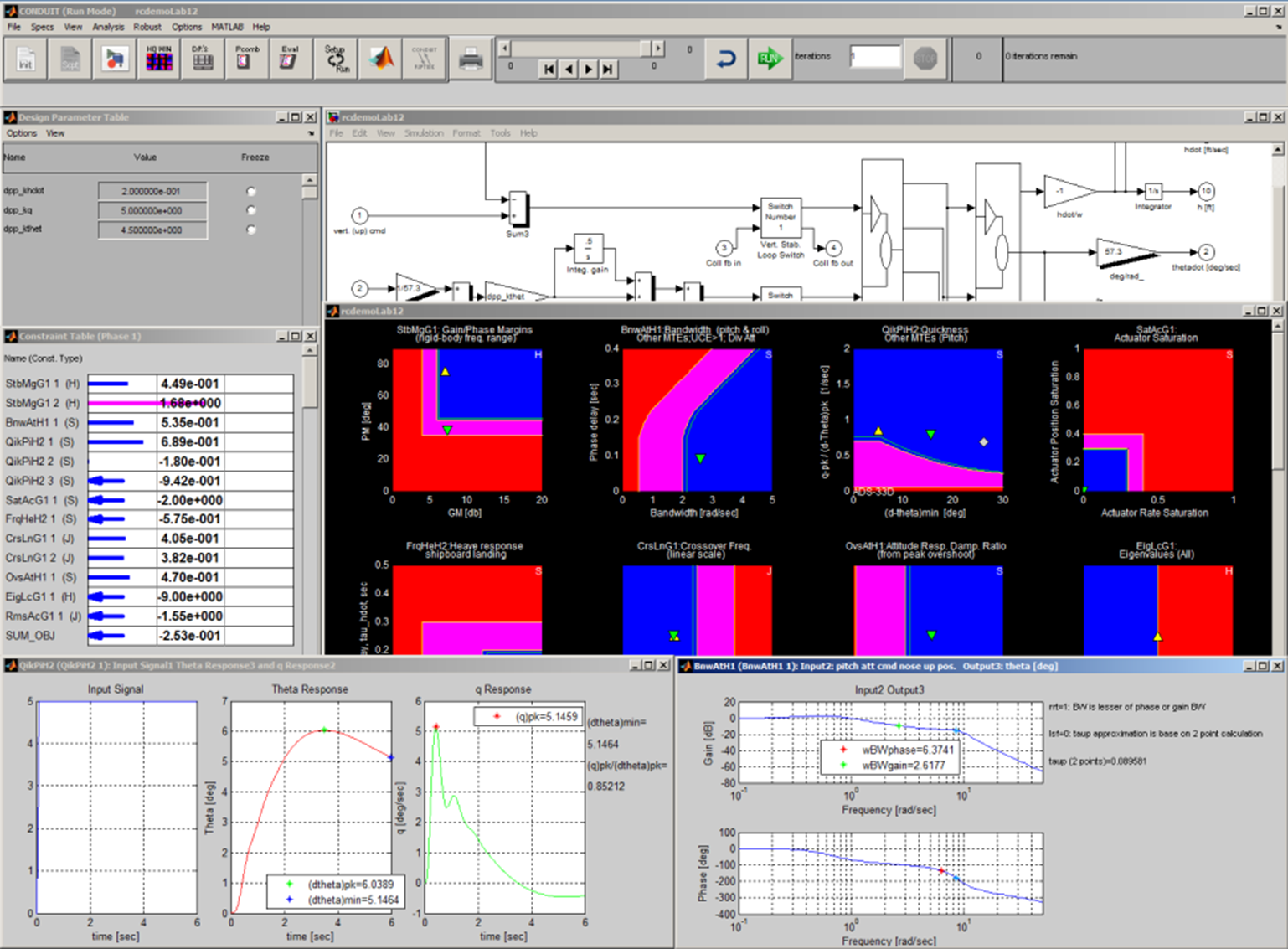CONDUIT®
CONtrol Designer's Unified InTerface

Figure 1: CONtrol Designer's Unified InTerface
The CONtrol Designer's Unified InTerface (CONDUIT®) is a state-of-the-art computational facility for aircraft flight control design, evaluation, and integration for modern fixed- and rotary-wing aircraft. The CONDUIT® system employs an interactive graphical user interface to bring together the three areas of aircraft design: dynamics modeling, control law design, and evaluation of aircraft handling qualities specifications.
CONDUIT® enables users to:
- Perform analysis of aircraft handling qualities
- Rapidly display the effects of changes to model or control system dynamics
- Optimize designated parameters to tune the system to multiple specifications
- Generate analysis plots for each specification
Introduction to CONDUIT®
The U.S. Army Combat Capabilities Development Command (DEVCOM) Aviation & Missile Center (AvMC) and San José State University Research Foundation (SJSURF) jointly distribute CONDUIT®, a state-of-the-art computational facility for aircraft flight control design and evaluation. CONDUIT® provides an environment for design integration and data resources.
Background
The design, integration, and flight test development of flight control systems for modern fixed- and rotary-wing aircraft presents a challenging task that factors significantly in aircraft development. Comprehensive specifications and sophisticated time- and frequency-domain evaluation techniques are applied to ensure desired performance and handling-qualities of modern aircraft, and to minimize flight test tuning. The overlap of flexible airframe modes and high-bandwidth control laws drives the requirement for incorporating increasingly higher-order analytical and identification-derived simulation models, and automated gain selection techniques in the control system design process.
The control law design and evaluation for a single design point is made very laborious as a result of the numerous and often competing design specifications. This process must be repeated for the tens or even hundreds of configuration design points that are evaluated for a full flight envelope control system. Further, the control system design engineer must continually update and integrate improvements in the math models as hardware test data become available. Often, design specifications are also introduced during the course of aircraft development, which as with the other changes requires control law re-tuning across the flight envelop. Since current tools generally do not facilitate the study of the trade-offs between competing specifications, hardware characteristics, and performance metrics, the final design may not make the best use of available control authority for modern control-configured vehicles. The failure to consider such trade-offs can compromise control system performance and handling-qualities. Clearly, sophisticated interactive computational tools are needed to integrate these many aspects of the flight control design process.

Figure 2: CONDUIT® — Control Designer's Unified Interface
What is CONDUIT®?
CONDUIT® is a sophisticated "associate" that provides comprehensive analysis support and design guidance to a knowledgeable control system designer. CONDUIT® enables users to define design specifications and system models and to perform multi-objective function optimization to tune selected design parameters. The system has been used to successfully exploit trade-offs between design specifications to significantly improve expected handling qualities and has potential for reducing the time and cost of control system flight test optimization.

Figure 3: Control System Fight Test Optimization User Interface
Additional Information
SALES & OTHER INQUIRIES CONTACT
San José State University Research Foundation
flight-control-sta@sjsu.edu